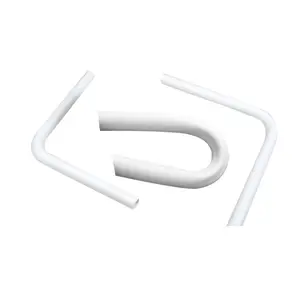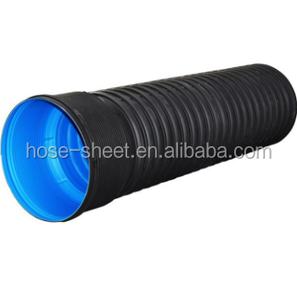(45780 products available)















































































































































































































A 40mm pipe is a round tube with a 40mm outside diameter used to transport liquids or gases. These pipes come in various sizes, materials, and applications. Here are some common types:
40mm Galvanized Pipe
A galvanized steel 40mm pipe is a popular choice for many applications. It is durable and corrosion-resistant, thanks to the zinc coating applied during galvanization. This pipe is used in construction projects, water supply, and fencing. It is available in different wall thicknesses, such as schedule 40 and schedule 80.
40mm PVC Pipe
PVC or polyvinyl chloride is a type of plastic. A 40mm PVC pipe is lighter than a metal pipe but offers similar strength. It is cheaper and comes in different colors, such as white and gray. Builders use it for water drainage, electrical conduit, and sewage systems.
40mm Copper Pipe
Copper is a metal that does not rust. A copper pipe is a tube made of copper metal. It is used to carry water and refrigerants in air conditioning systems. There are two types of copper pipes, rigid and flexible copper pipes. Rigid pipes are used in plumbing applications, while flexible pipes are used in refrigerant lines.
40mm HDPE Pipe
HDPE stands for high-density polyethylene. An HDPE pipe is a tube made of plastic. It is very light and strong, making it easy to transport and install. Engineers use it for drainage, irrigation, and gas distribution because it is not affected by different chemicals.
40mm Brass Pipe
A brass pipe is a tube made of a metal mixture called brass. It has a beautiful gold color and is used for decorative applications, plumbing, and gas lines.
40mm Stainless Steel Pipe
This pipe is made from a special metal called stainless steel. It is strong and does not rust. Engineers use it for high-pressure applications, water tanks, and food processing equipment.
40mm Iron Pipe
An iron pipe is a tube made of iron. It is used in construction applications. It is less common today because of the popularity of galvanized steel pipes.
40 mm pipes are used in different applications depending on the material. For example, a 40 mm pipe is used for plumbing, electrical conduits, fabricating, and HVAC systems.
The features and functions of a 40 mm pipe are as follows:
Fluid Transfer:
- 40 mm pipes are widely used in plumbing applications. They transport water in residential and commercial buildings. This means they are used in water supply and drainage systems.
- The pipes are also used in irrigation systems. They help to distribute water to crops and agricultural fields.
- They are also used in industrial settings to transfer liquids and other fluids.
High Strength and Durability
- 40 mm pipes are strong and durable. This makes them suitable for carrying water or other fluids. They can be used in applications where they are exposed to harsh environmental conditions.
- These pipes are resistant to corrosion. This ensures they maintain their structural integrity for a long period of time.
- The durability of the pipes reduces the chances of damage, leaks, or bursts. This ensures they are used for a long period of time.
Low Hydraulic Resistance
- The 40mm diameter allows for the efficient flow of fluids with low resistance. This is important in plumbing systems to ensure water is delivered efficiently to tap points.
- The low hydraulic resistance of the pipe helps to reduce energy consumption. This is because less energy is required to pump fluids through the pipe.
Versatility
- 40 mm pipes can be used in different applications. These applications range from water supply, and wastewater management, to electrical wiring and HVAC systems.
- The pipes are compatible with different fittings and fixtures. This makes it easy to customize plumbing and electrical systems as per project requirements.
Ease of Installation
- 40 mm pipes are lightweight, especially those made of PVC. This allows for simple handling and installation, which reduces labor costs and time.
- They also have standard fittings and joints. This ensures that they are connected correctly to create a secure and leak-proof system.
Reduced Water Hammer Effects
- 40 mm pipes help to minimize the impact of sudden changes in water flow. This is known as water hammer. Water hammer causes shocks and vibrations in plumbing systems. These shocks and vibrations can damage pipes and fittings over time.
40 mm pipes are used in various applications, including plumbing and drainage systems, electrical wiring, HVAC systems, and structural applications. The usage scenarios are as outlined below:
Plumbing and Drainage:
40 mm plastic pipe is commonly used in plumbing systems for water supply and drainage. It is ideal for carrying water to and from taps, sinks, showers, and toilets. Additionally, it is suitable for carrying wastewater and stormwater in drainage systems. The 40 mm pipe is also used in soil and vent stacks to transport sewage and facilitate air circulation in drainage systems.
Electrical Wiring:
These pipes are used as conduits for electrical wiring in buildings and infrastructure. Their smooth interior surface reduces friction, making it easy to pull wires through the conduit. Additionally, they protect electrical wires from physical damage, moisture, and UV radiation, ensuring safe and reliable power transmission.
HVAC Systems:
40 mm pipes are used in heating, ventilation, and air conditioning (HVAC) systems. They are used for the distribution of air in duct systems. The pipes are also suitable for carrying chilled water or refrigerant in HVAC systems.
Industrial Applications:
These pipes are used in industrial applications such as factories, refineries, and chemical plants. They are ideal for transporting liquids, gases, and slurries in various industries, including oil and gas, chemicals, and food processing. Additionally, they are used for the transfer of hot water, steam, and condensate in heating systems.
Agricultural Applications:
40 mm irrigation pipe is commonly used in agricultural settings. It is used for irrigation systems, including drip and sprinkler systems. The pipes ensure the efficient and timely delivery of water to crops, enhancing agricultural productivity. Additionally, these pipes are used for the transportation of chemicals, fertilizers, and pesticides in agriculture.
Construction and Infrastructure:
These pipes are widely used in construction projects and infrastructure development. They are used for the construction of columns, beams, and trusses. Additionally, they are used for the transportation of water in urban water supply systems.
Miscellaneous Applications:
These pipes are used in various applications, including telecommunications, marine, and transportation. For instance, 40 mm PVC pipe is used as conduits for fiber optic cables and telephone lines. Additionally, they are used in boats, ships, and offshore platforms for the transportation of water, fuel, and waste. Furthermore, they are used in vehicles, trailers, and caravans for the transportation of fluids, such as water and waste.
Material and its Applications:
A 40mm pipe is used in various applications in construction and other industries. The application of the pipe determines the material to choose from. For example, if the pipe is for carrying water, then an UPVC or PVC 40mm pipe would be suitable. If the pipe is for electrical wiring, then a 40mm EMT pipe would be suitable.
Consider The Environment:
The environment where the pipe will be installed also influences the choice of the 40mm pipe. If the pipe is being installed in a place with high temperatures or extreme weather, then a material like HDPE should be considered since it is more flexible and resistant to environmental factors.
Pressure Requirements:
The pressure of the fluid or gas that will be transported through the pipe should also be considered. Pvc pipes are suitable for low to medium pressure, while other pipes like galvanized steel or HDPE pipes are suitable for high pressure. Consider the pressure requirements and choose the suitable pipe.
Safety Standards:
It is important to check the safety standards and regulations of the industry or application before purchasing 40mm pipes. This ensures that the pipes meet the required standards and are safe when used. Failure to adhere to the required safety standards could lead to accidents or increased costs during installation.
Cost And Durability:
40mm pipe comes in different prices and durability. When choosing a pipe, it is important to balance the cost and durability. Materials like PVC are cheaper and more suitable for water systems. On the other hand, aluminum and steel are more durable and resistant to damage, but they are more expensive. Consider the budget and choose a pipe that is within budget and also durable.
Ease Of Installation:
Some pipes are more suitable for installation than others. For example, PVC pipes are simply jointed using adhesive, while metal pipes require welding or special fittings. If the installation process has a cost, choose a pipe that is easy to install and will incur fewer costs.
Q1. What does 40mm pipe mean?
A1. This means the outside diameter of the pipe is 40mm. However, the most accurate way to determine the size of a pipe is to measure its outside diameter.
Q2. What is a 40mm pipe used for?
A2. A 40mm pipe is commonly used for waste and vent applications. These applications include: Vertical soil stacks; Vent pipes; Horizontal soil pipes; Waste pipes; Rainwater downpipes; Cable management; And more.
Q3. What’s the difference between 40mm and 32mm pipes?
A3. A 40mm pipe has a 40mm outside diameter and a 32mm pipe has a 32mm outside diameter. However, a 40mm pipe will also have a higher flow rate than a 32mm pipe. This is because 40mm pipes have a larger bore than 32mm pipes.
Q4. How long will a 40mm pipe take to fill with water?
A4. The time taken to fill a 40mm pipe with water will depend on the diameter, length of the pipe, and water pressure. However, if a 40mm pipe is filled with a constant flow of water, it can take approximately 2 minutes to fill 100m of the pipe.
Q5. What type of material is best for pipes?
A5. There is no best material for pipes. The best material depends on the application. However, popular pipe materials include PVC, ABS, Metal, and PE.